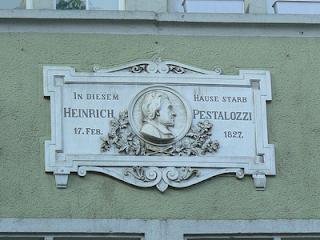Holding that children should study the objects in their natural environment, Pestalozzi developed a so-called "object lesson" that involved exercises in learning form, number, and language. Pupils determined and traced an object's form, counted objects, and named them. Students progressed from these lessons to exercises in drawing, writing, adding, subtracting, multiplying, dividing, and reading. Pestalozzi employed the following principles in teaching (viewed as correct even today): (1) begin with the concrete object before introducing abstract concepts; (2) begin with the immediate environment before dealing with what is distant and remote; (3) begin with easy exercises before introducing complex ones; and (4) always proceed gradually, cumulatively, and slowly.
I strongly agree with this theory that children should learn from activity and drawing their own conclusions. I have taken classes where it had been dictated to me what the correct answer is or what the correct way to do an assignment is. I found that I did not learn a lot from these types of assignments, I left wondering “how did they get that answer?”, or “why is that the correct way to do this assignment?” In a couple of my classes growing up my teachers relied on activities to help us gather our own conclusions and we would look examine our conclusions and look at how were drawn. This made class more interesting and gave me a better sense of accomplishment. It can be frustrating at times when you figure something out on your own, but I found those were the classes were I learned the most. I believe that this should not be the case for every lesson, but I think it is a good idea to do once in a while.
“I wish to wrest education from the outworn order of doddering old teaching hacks as
well as from the new-fangled order of cheap, artificial teaching tricks, and entrust it to the
eternal powers of nature herself, to the light which God has kindled and kept alive in the
hearts of fathers and mothers, to the interests of parents who desire their children grow
up in favour with God and with men.” (Pestalozzi quoted in Silber 1965: 134)




1 comment:
How many children in a public school setting will get an education where activity is the main teaching tool? Most teachers have books, worksheets, lists, curriculum, the children are fed from these sources.
As a homeschooler I can show my children the leonid meteor shower at 1 am in the cold dark sky, they don't need to go to a textbook to learn about meteors. We can learn about how a bill becomes a law by making our own bills and sitting in on a capital session.
I agree with Mr. Pestalozzi activites that engage are more likely to spark a child's interest than a boring worksheet. The question is, as a teacher, do you feel that you can give each child that one on one activity time that sparks their learning for the rest of their life?
Post a Comment